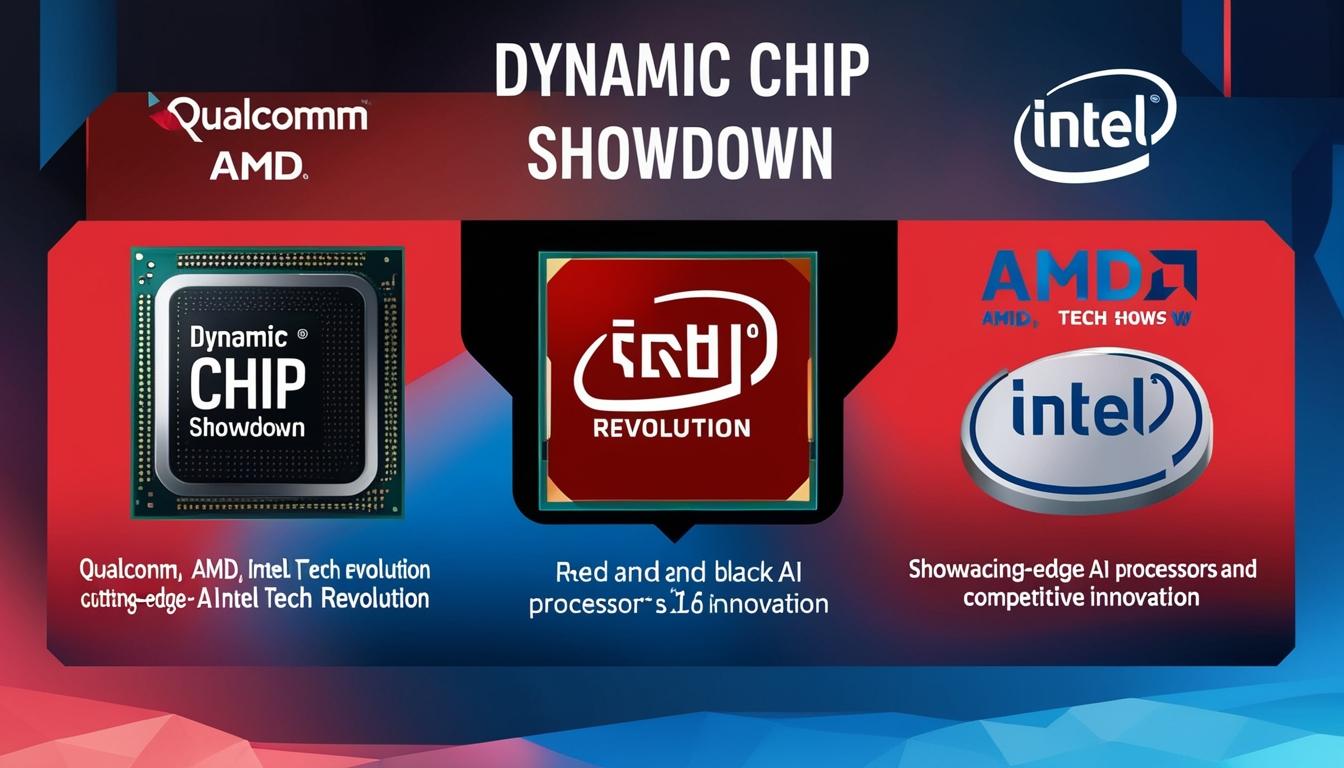At the CES 2025 technology convention, a trio of leading chip manufacturers—Qualcomm, AMD, and Intel—unveiled key advancements in their processor offerings, focusing on the burgeoning AI and automation market within the computing sector. These developments signal a competitive landscape as companies strive to capture consumer and enterprise attention in a thriving segment that is rapidly evolving.
Qualcomm introduced its latest addition to the Snapdragon X Series, known simply as Snapdragon X, which aims to power budget-friendly Windows Copilot+ PCs priced around $600. Announcing this at CES, Qualcomm confirmed that devices featuring the Snapdragon X chip would be available from major vendors such as Acer, Asus, Dell, HP, and Lenovo in early 2025. This new chipset, identified as the X1-26-100, offers eight custom Arm-compatible Oryon CPU cores, peaking at a multi-core frequency of 3 GHz, alongside a robust 45 TOPS Hexagon neural processing unit (NPU). Alex Katouzian, Qualcomm’s group general manager for mobile compute, asserted that this series provides the “most powerful and power-efficient processors for Windows in their class,” appealing to students and budget-conscious consumers alike.
On the other side of the aisle, AMD set its sights firmly on the AI and gaming markets with the launch of its Ryzen AI Max chip series, designed to cater to gamers and content creators. These processors promise up to 128GB of unified memory and an impressive 50 TOPS of AI performance, establishing a formidable presence in the fast-paced chip landscape. Additionally, the Ryzen AI 300 and 200 series were introduced as more accessible options for consumers who require solid AI performance at a lower cost. This approach establishes AMD’s intention to capture various market segments, particularly with the high-performance Ryzen 9950X3D and Ryzen 9900X3D chips aimed at gamers.
Intel also made significant strides by expanding its Core Ultra AI chip lineup, launching the Core Ultra 200HX and H series, tailored for mobile devices used by graphic designers and gamers. This latest offering promises improved gaming performance with 24 and 16 computing cores, respectively, and includes a built-in NPU for AI tasks. Jack Gold, principal analyst at J. Gold Associates, noted that these developments were essential for Intel, which was at risk of falling behind its competitors.
The competitive tensions between these three technology giants are significant, given that each has its angles in the ongoing "chip wars." While AMD continues to gain market share from Intel, Qualcomm makes inroads with its mobile-oriented processors aimed at the PC market. The competitive dynamic is crucial as they each attempt to innovate and deliver devices that accommodate new AI capabilities that aim to enhance consumer and enterprise user experiences.
However, a report from IDC highlighted that despite the rapid advancements in AI capabilities, the global PC market experienced a 2.4% shipment decline, with much of the demand still revolving around entry-level devices. The report indicates that while high-end AI PCs hold premium status, widespread adoption is contingent on software advancements that foster compelling reasons for consumers to upgrade their systems.
In parallel, as businesses pivot to more powerful computing solutions, especially following the anticipated end-of-support for Windows 10 in October, many companies are expected to replace aging PCs with new AI-equipped models. The integration of AI features into enterprise software from providers like Microsoft is expected to propel AI PC adoption, potentially driving a wave of upgrades in the coming years.
With each company firmly positioned, the upcoming year will likely see intense competition as Qualcomm, AMD, and Intel battle for dominance in the increasingly vital AI automation landscape within the tech industry.
Source: Noah Wire Services
